Galaxy Note 7 vs. iPhone 6s Plus: Battle of the big phones!
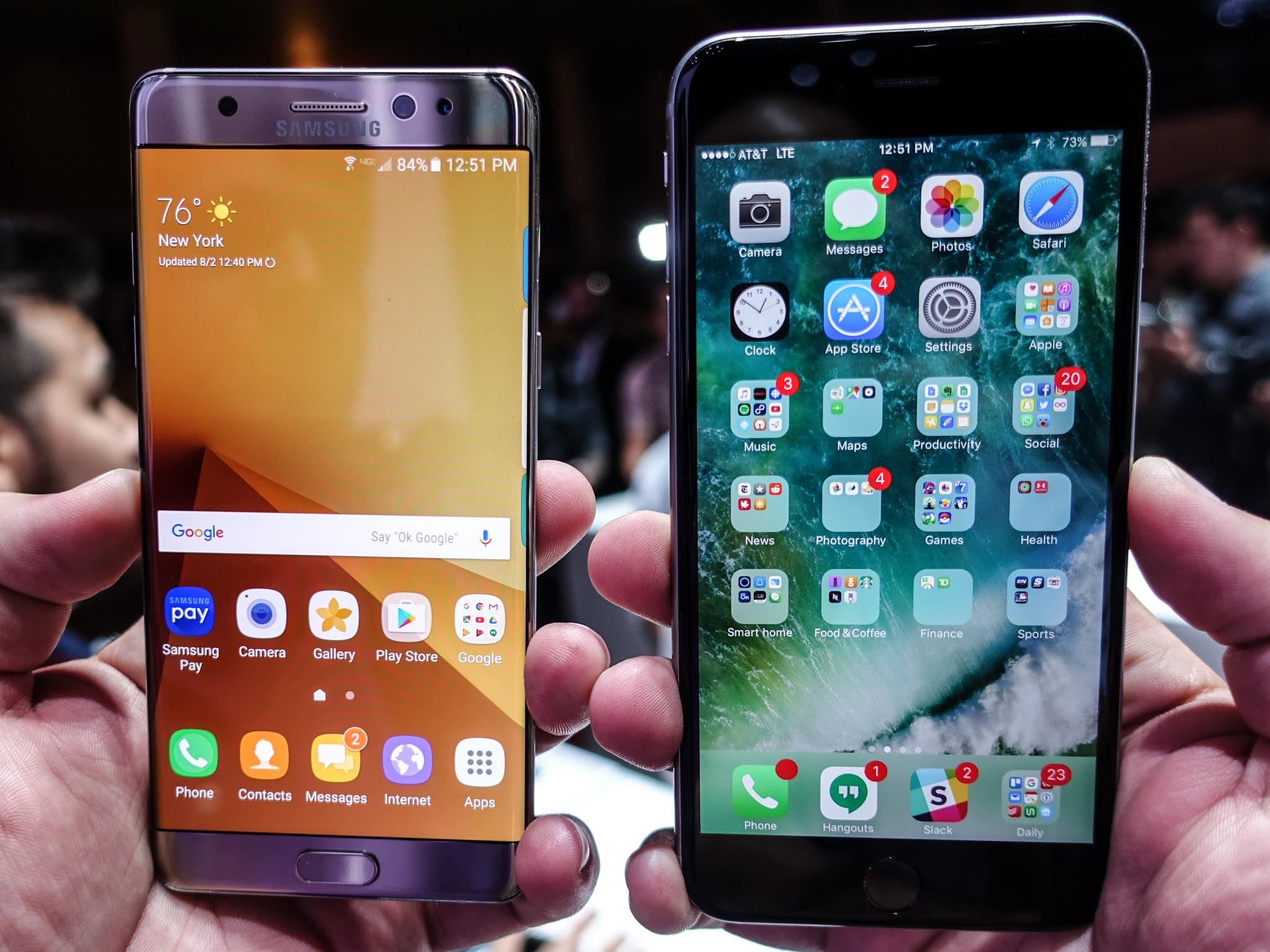
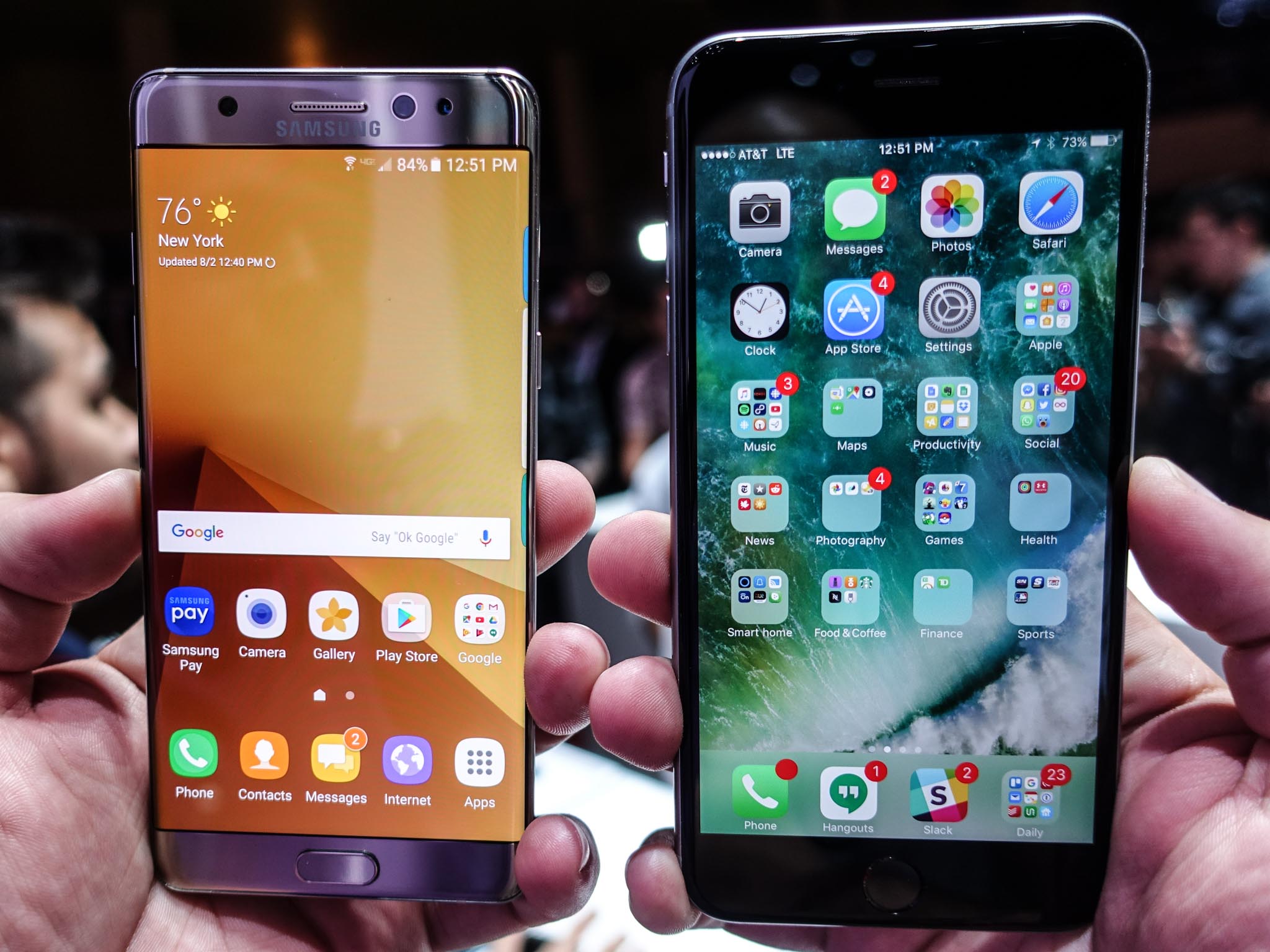
I've just spent a week working with the Android Central team preparing for the Samsung Galaxy Note 7, the Korean giant's latest salvo in the large smartphone space. I read a lot of words about a smartphone that, instead of making overt changes, subtly builds on the success of its predecessor. And then, after using it, I realized that the sum of those parts is one of the most competitive and interesting smartphones to come out this year. So, how does it compare to the existing Apple flagship, iPhone 6s Plus, and what does it mean for the one coming up, iPhone 7?
Symmetry
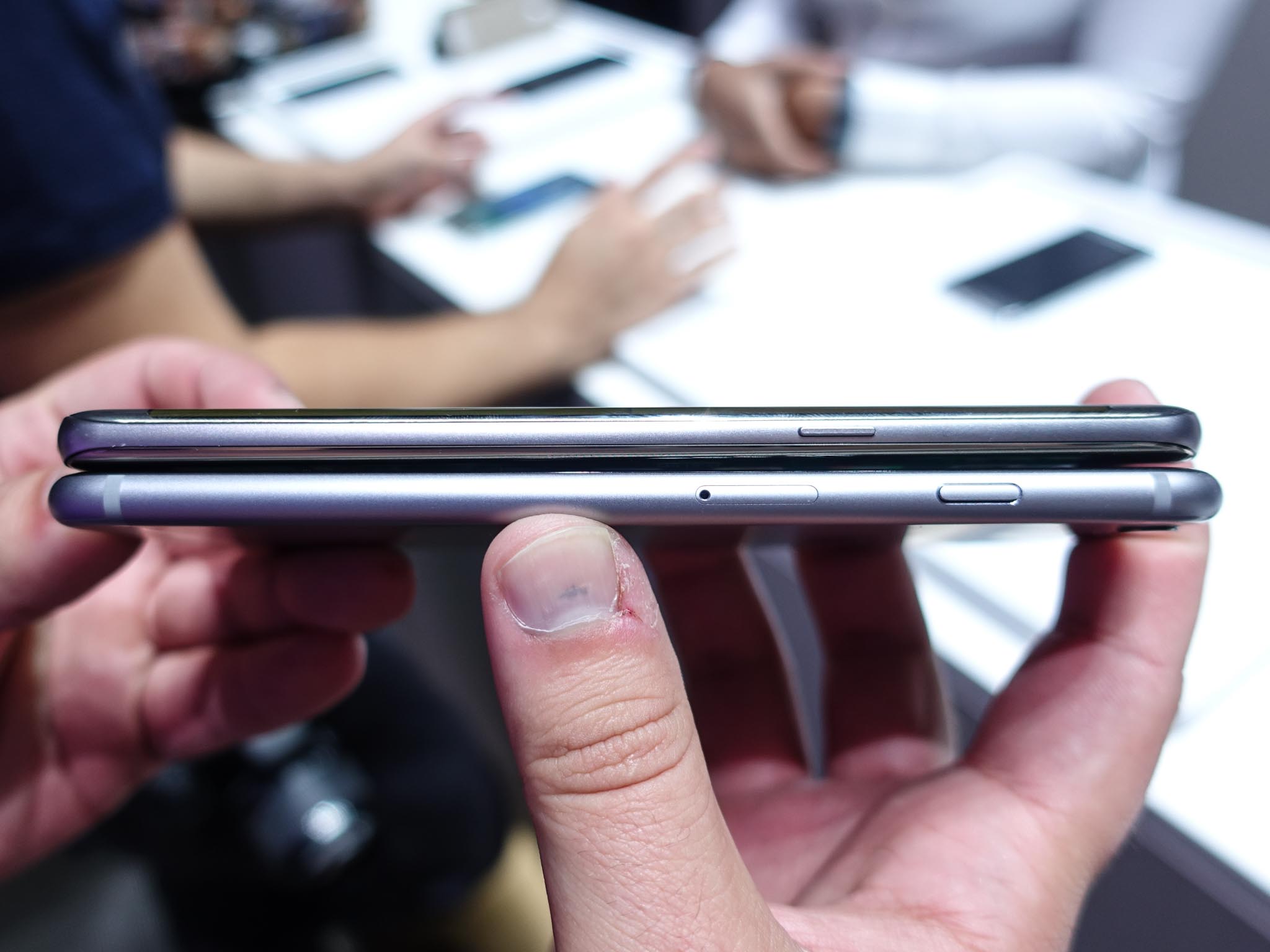
The first thing that struck me about the Galaxy Note 7 is its symmetry, with the tight curves in its front and back meeting along the side bezels to form an unbroken connection — something that would have been impossible just two years ago, when the processes for curving glass over flexible AMOLED displays was in its infancy. Pundits similarly remarked on the elegance of Apple's curved metal chassis when the iPhone 6 debuted in 2014, and comparing both the iPhone 6s Plus next to the new Note 7, it's clear both companies are able to command enormous manufacturing advantages over much of the competition (though they are catching up).
While the the ports and speaker holes on the Note 7's bottom still don't line up, the rest of the phone is extremely well balanced, and beautifully engineered. It is narrower than its predecessor, the Note 5, and significantly easier to use with one hand than the iPhone 6s Plus, which is a full three millimeters wider. Indeed, the gulf in screen-to-bezel ratio between the iPhone Plus series and some of Android's biggest phones is widening, with products like the 5.5-inch ZTE Axon 7 approaching (but not quite reaching) the designation of "compact."
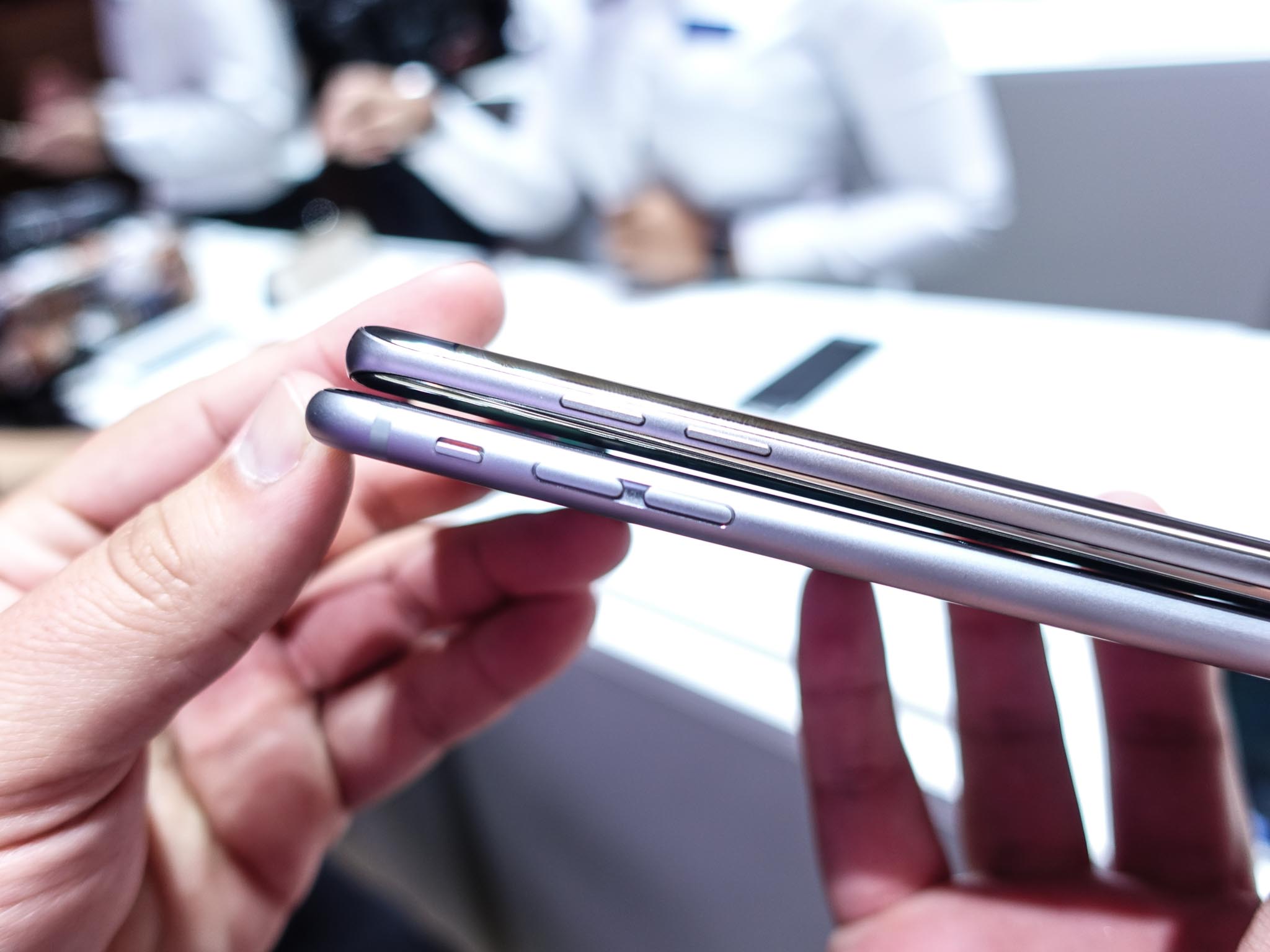
Galaxy Note 7 vs. iPhone 6s Plus Specs comparison
| Category | Galaxy Note 7 | iPhone 6s Plus |
|---|---|---|
| Operating System | Android 6.0 Marshmallow | iOS 9.3 |
| Display | 5.7-inch 2560x1440 (518ppi)Super AMOLEDDual edge screenGorilla Glass 5 | 5.5-inch 1920x1080 (401ppi)IPS LCDIon-strengthened glass |
| Processor | Quad-core Snapdragon 820 (U.S)Octa-core Exynos (international) | Apple A9 chip |
| Storage | 64GB | 16-128GB |
| Expandable | microSD up to 2TB | No |
| RAM | 4GB | 2GB |
| Rear Camera | 12MP f/1.71.4-micron pixelsOIS | 12MP f/2.21.22-micron pixelsOIS |
| Front Camera | 5MP f/1.7 | 5MP f/2.2 |
| Connectivity | Wi-Fi 802.11 ac MIMOBluetooth v4.2 LEANT+, USB 2.0, NFC | Wi-Fi 802.11 ac MIMOBluetooth v4.2 LEUSB 2.0, NFC (Apple Pay only) |
| Charging | USB-CFast Charge | LightningFast Charge |
| Wireless charging | Yes, Qi wirelessPowermat wireless | No |
| Input | S Pen stylus4096 pts of pressure sensitivity | Passive stylus only |
| Battery | 3500 mAh | 2750 mAh |
| Water resistance | IP68 rating | Unofficial water resistance |
| Security | One-touch fingerprint sensorIris scannerSamsung KNOXPrivate folder | Touch ID fingerprint sensor |
| Dimensions | 153.5 x 73.9 x 7.9 mm | 158.2 x 77.9 x 7.3 mm |
| Weight | 169 g | 192g |
An unfair comparison
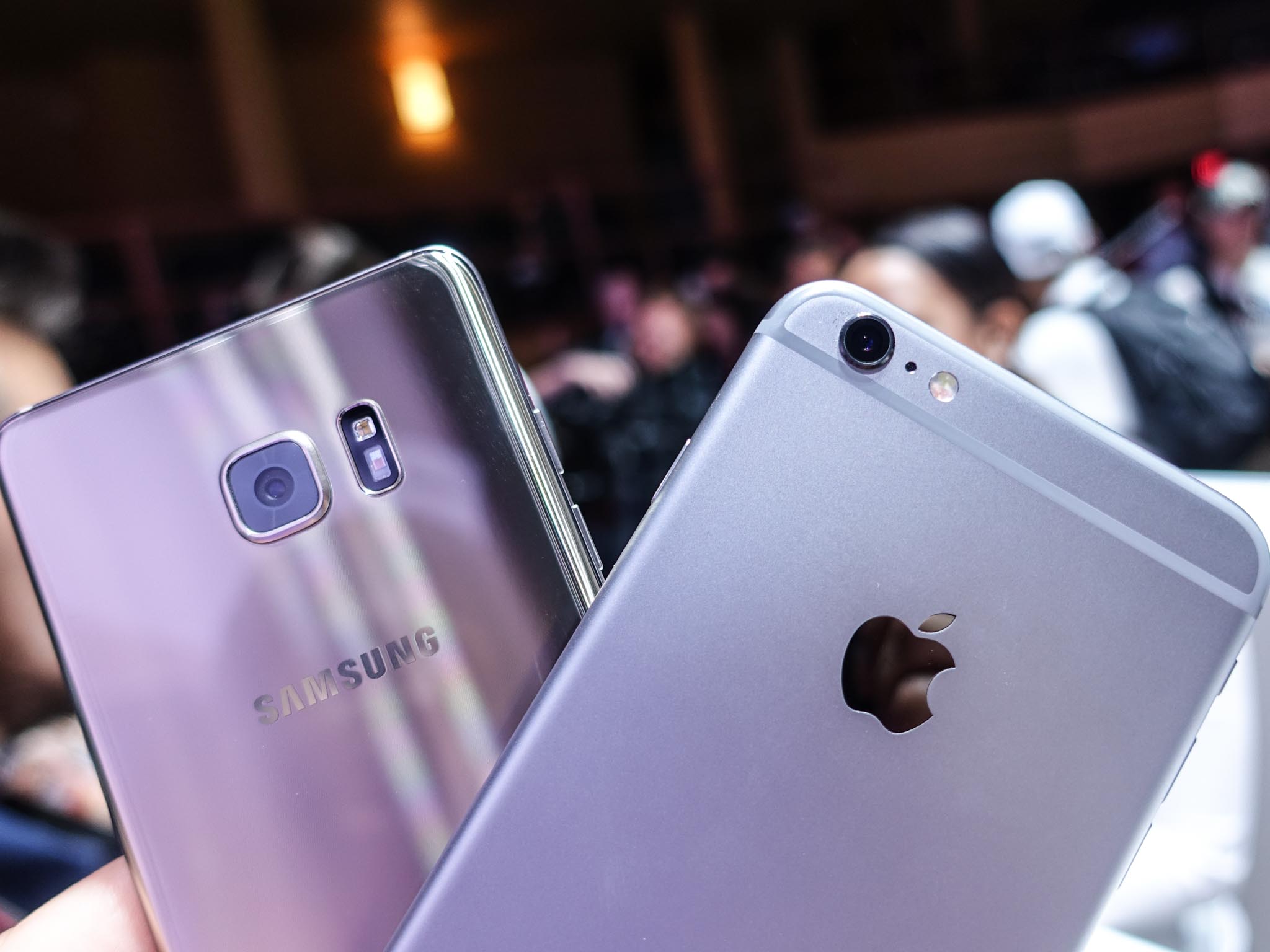
Of course, this is an unfair comparison given that the Note 7 is brand new and the iPhone 6s Plus eleven months old and nearing the end of its annual release cycle. For all we know, the so-called iPhone 7 Plus will shrink, as the Note series has over the past few years, while maintaining its 5.5-inch screen size, or it will merely offer a larger screen with the same dimensions. But Apple hasn't shown as fervent a concern with screen-to-bezel efficiency as it has with thinness and lightness — the iPhone 6s Plus is even slightly thicker and heavier than its 2014 counterpart — and there's no reason to believe that won't continue this year.
While the the ports and speaker holes on the Note 7's bottom still don't line up, the rest of the phone is extremely well balanced, and beautifully engineered.
But the Note 7 has many of the features iPhone customers have been clamoring for since the early years of the this decade: water resistance; wireless charging; a high-resolution display; and a generous helping of internal storage as standard. And the return of the microSD card to the Note line will certainly attract a certain subset of core Android users who may have defected from Samsung in the 12 months since the Note 5's launch.
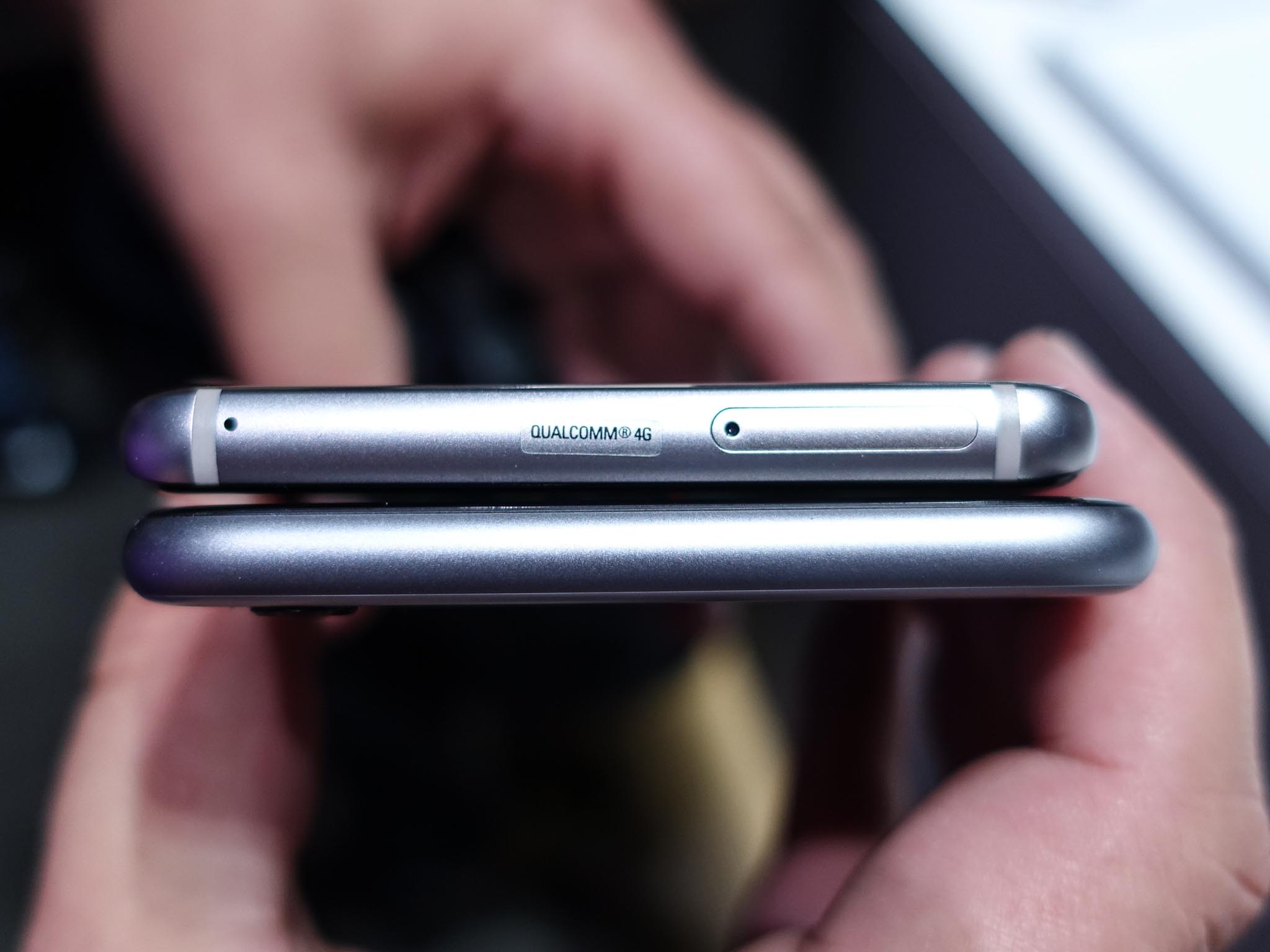
As different as they are, though, the iPhone 6s Plus and Note 7 share a number of truths about the smartphone industry in general: they are wholly iterative replacements for very innovative devices, and eschew gimmickry in favor of reliability and — more than anything — quality. To that end, the Note 7's Android software lacks much of the trickery that was so common just two years ago, opting for flat textures, white backgrounds, and thin, easy-to-read typography optimized for high-resolution displays. Even the announcement of an iris scanner lacked the fanfare such an inclusion would have three years ago; it's just another way to log in to your phone (and hopefully, with an impending API, other secure apps).
Pen vs. Pencil
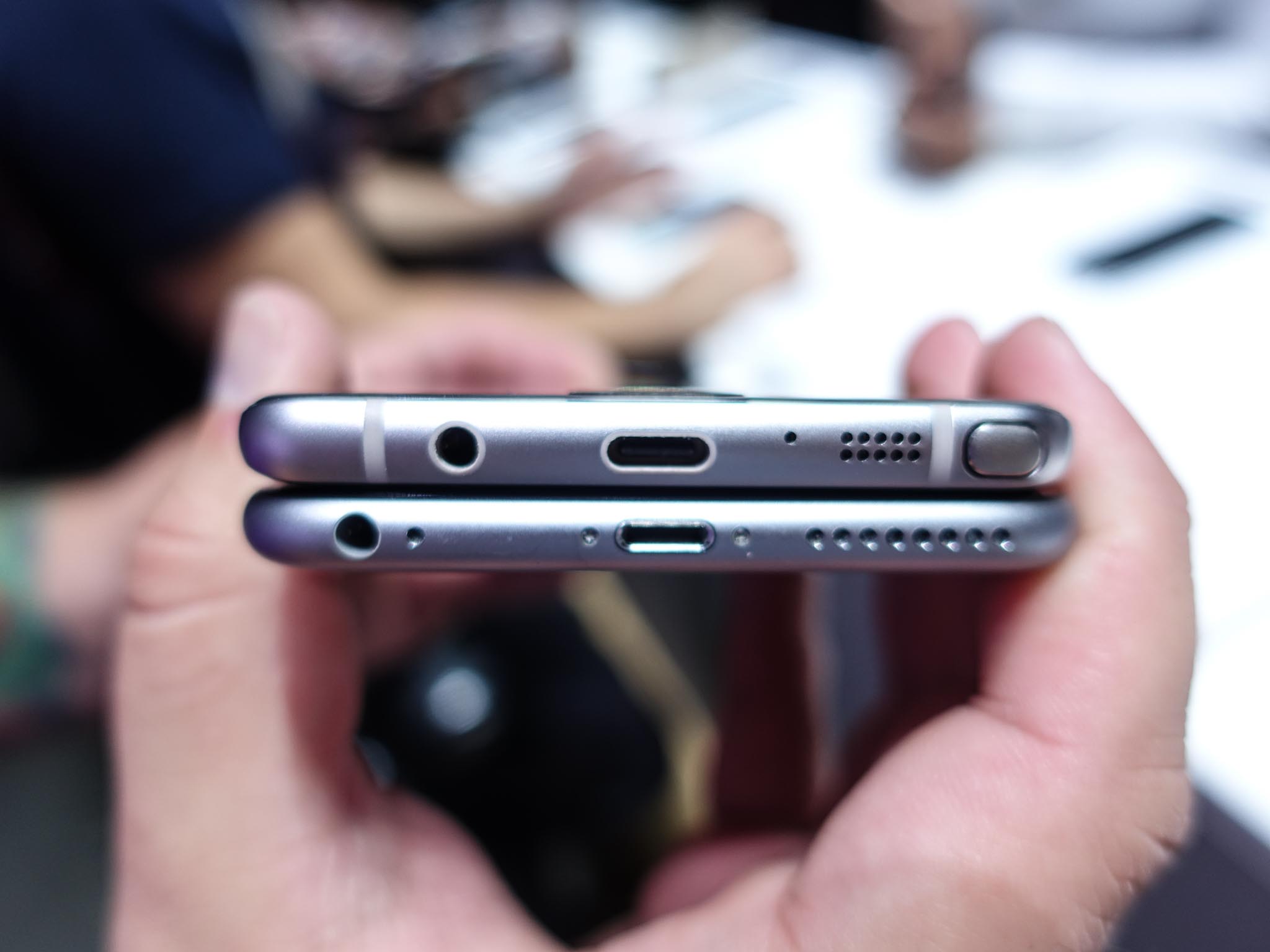
One of the most interesting things about the Note 7 is its S Pen. Even five years after its debut, the S Pen has managed to retain its importance among a subset of Note users enthralled with its intuitive storage and wide app support. This year's version has 4096 points of pressure, similar in theory to the Apple Pencil to which it will inevitably be compared.
Master your iPhone in minutes
iMore offers spot-on advice and guidance from our team of experts, with decades of Apple device experience to lean on. Learn more with iMore!
As different as they are, though, the iPhone 6s Plus and Note 7 share a number of truths about the smartphone industry.
We won't know for a month yet if Apple plans to bring Pencil support to the iPhone, but we can safely say that it will not be stored in the chassis like a ballpoint. And while Samsung executives took a soft jab at Apple during the Note 7 keynote by saying that the S Pen needs no external power, nor a special slot in one's bag, the reality is that a feature that in 2011 was dismissed as frivolous has now been acknowledged in some way by the world's most influential smartphone maker. As much inspiration as Samsung draws from Apple in the software department, there is no question that Cupertino's recent flurry of investment in its accessory ecosystem, centred around the burgeoning Smart Connector port, is an idea well worn by other giants of tech.
Peak shine
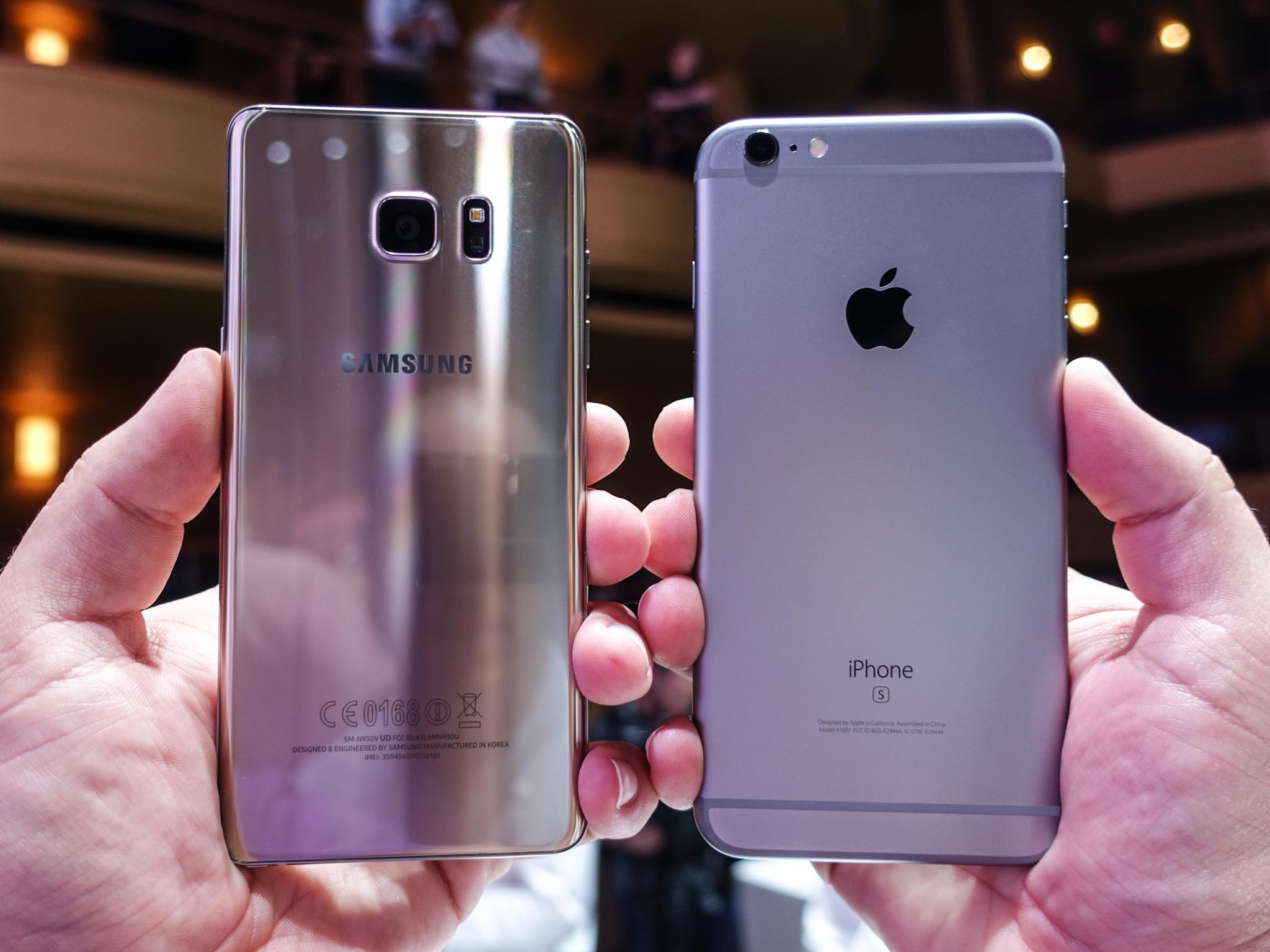
The Galaxy Note 7 is shiny — not just in a physical sense, but in the way it reflects much of the phone industry's tepid growth and rapid maturity of the past three or so years. From the way its tightly curved glass edges curl to meet a color-matched metal bezel to its port cover-free implementation of IP68 water resistance, the Note 7 is an engineering marvel. Its design is also governed by different values than Apple's. But these differences are shrinking year after year, as Samsung's hardware prowess improves and Android's once-common idiosyncrasies subside.
As the resident cross-platform user at iMore, I'll be exploring the waning distance of these divergences in greater detail over the coming months, but suffice it to say Samsung has engineered its best phone ever with the Note 7, and likely one of the best smartphones, period. It's certainly raised the bar for Apple in the coming month, and that's a good thing for the industry in general.
Now if we could only get Samsung to launch phones with the latest Android version.
Daniel Bader is a Senior Editor at iMore, offering his Canadian analysis on Apple and its awesome products. In addition to writing and producing, Daniel regularly appears on Canadian networks CBC and CTV as a technology analyst.


